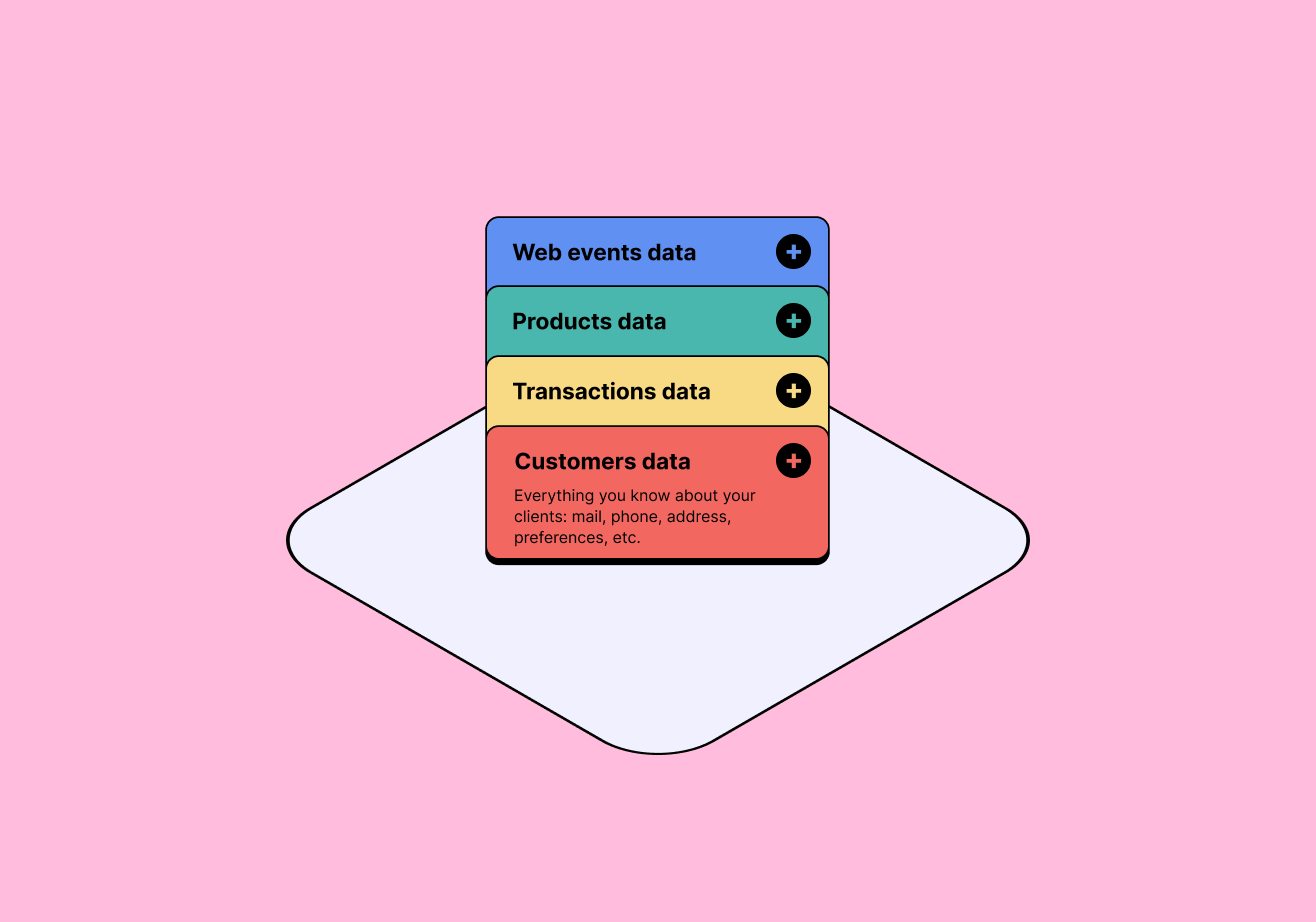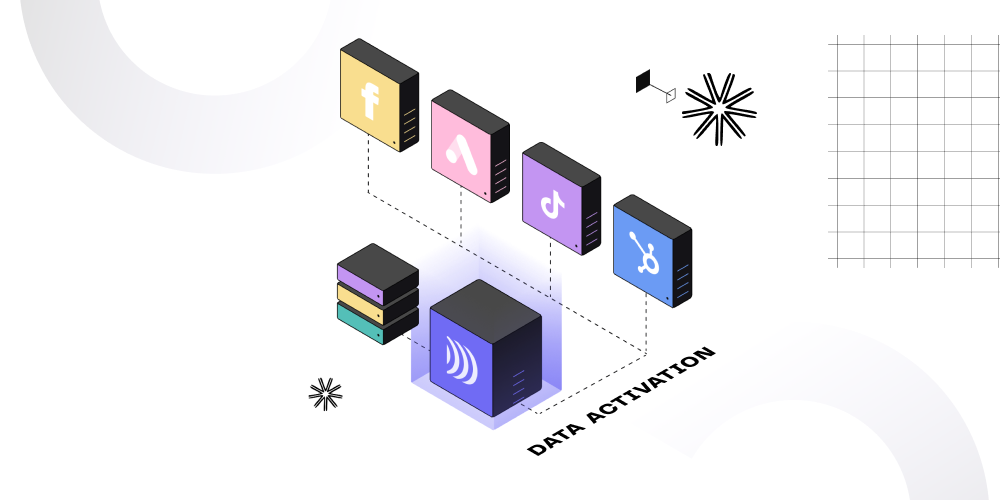
Data activation: the ideal set-up
4min • Last updated on Feb 20, 2025

Yomna Sfaxi
Growth & Marketing Manager
Get ready to supercharge your marketing strategies and take your business to new heights with the power of customer data activation!
In today's business landscape, data has become a crucial asset, and leveraging it can give your business a significant edge over your competitors. There are a wide range of use cases for customer data activation, but all have the same objectives: gaining valuable insights into customer behavior, preferences, and needs, helping you improve your marketing campaigns and ultimately increase your revenue. That's why data activation has become mandatory.
👉🏼 This articles aims at completing this guide. We'll take you through seven simple steps to unlock the power of customer data using a data warehouse and a Composable CDP.
Step 1: Define Your Marketing Objectives
To start, take a deep dive into your business and identify what you want to achieve through your marketing efforts. Are you focused on increasing customer acquisition, or is your priority to improve customer engagement, increasing cross selling opportunities? Perhaps you are aiming to boost customer engagement or build stronger brand loyalty. Whatever your goals may be, defining them clearly is essential to create a roadmap for success.
For e-commerce businesses, the marketing objectives may include increasing online sales, improving the customer shopping experience, and building a strong online presence. B2C businesses may be focused on building brand awareness, engaging with customers on social media platforms, and creating a more personalized customer experience.
By defining your marketing objectives, you will have a clear understanding of your business goals and can develop a data activation strategy that aligns with your objectives. This will enable you to collect the right customer data, analyze it, and create targeted campaigns that resonate with your target audience. With a clear roadmap in place, you can move on to the next step.
Step 2: Build a data warehouse
Before activating your customer data, you should set up a data warehouse to effectively store and manage all your data in one centralized location.
💡To ensure that you choose the right data warehouse, we advise you to collaborate closely with your data team, who can provide insight into the technical aspects of the selection process.
Some of the most robust and reliable data warehouses in the market include Amazon Redshift, Google BigQuery, and Snowflake, each offering unique features that cater to different business needs.
Step 3: Integrate your marketing tools
Congratulations on selecting the right data warehouse for your business needs!
Now, you need to integrate it with your marketing tools. This step involves connecting your CRM, email marketing software, social media management tools, and analytics platforms to the data warehouse, allowing it to collect and process data from all these sources. It's essential to ensure that your data is accurate and up-to-date. The integration process involves configuring data flows, mapping data fields, and testing the integration to ensure that data flows seamlessly between your marketing tools and the data warehouse.
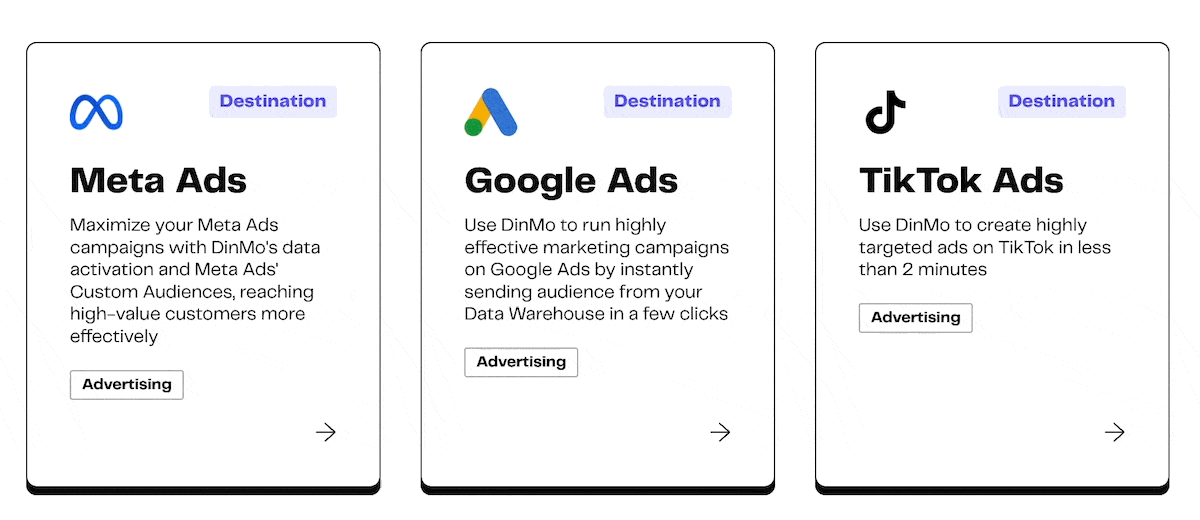
DinMo integrations
Step 4: Collect and unify customer data
The data warehouse's primary function is to aggregate data from various sources and merge them into a single customer profile. This consolidated profile encompasses valuable information such as customer demographics, browsing history, purchase history, and behavioral data which help you gain a comprehensive understanding of your customer's habits, preferences, and needs, allowing you to tailor your marketing efforts to suit their interests. Having a reliable and accurate customer profile is essential for making data-driven marketing decisions.

Model your business and connect it to DinMo
Step 5: Choose a Composable CDP
A Composable CDP is a cutting-edge customer data platform that goes beyond the traditional user interface. Instead, it leverages APIs to seamlessly connect and integrate data from various sources. With their powerful data analytics capabilities, Composable CDPs provide organizations with a comprehensive view of their customer's behavior and preferences. This not only helps improve customer experiences but also leads to increased customer satisfaction and ultimately drives business growth.
If you're looking to take your marketing campaigns to the next level, look no further than DinMo. As a Composable CDP, DinMo provides a simple and intuitive solution to create personalized marketing campaigns that truly resonate with your target audience. With DinMo's customer segmentation capabilities, you can easily group customers based on their behavior, preferences, and needs, and launch targeted campaigns across multiple channels. And the best part? You don't need any coding skills to make it happen!
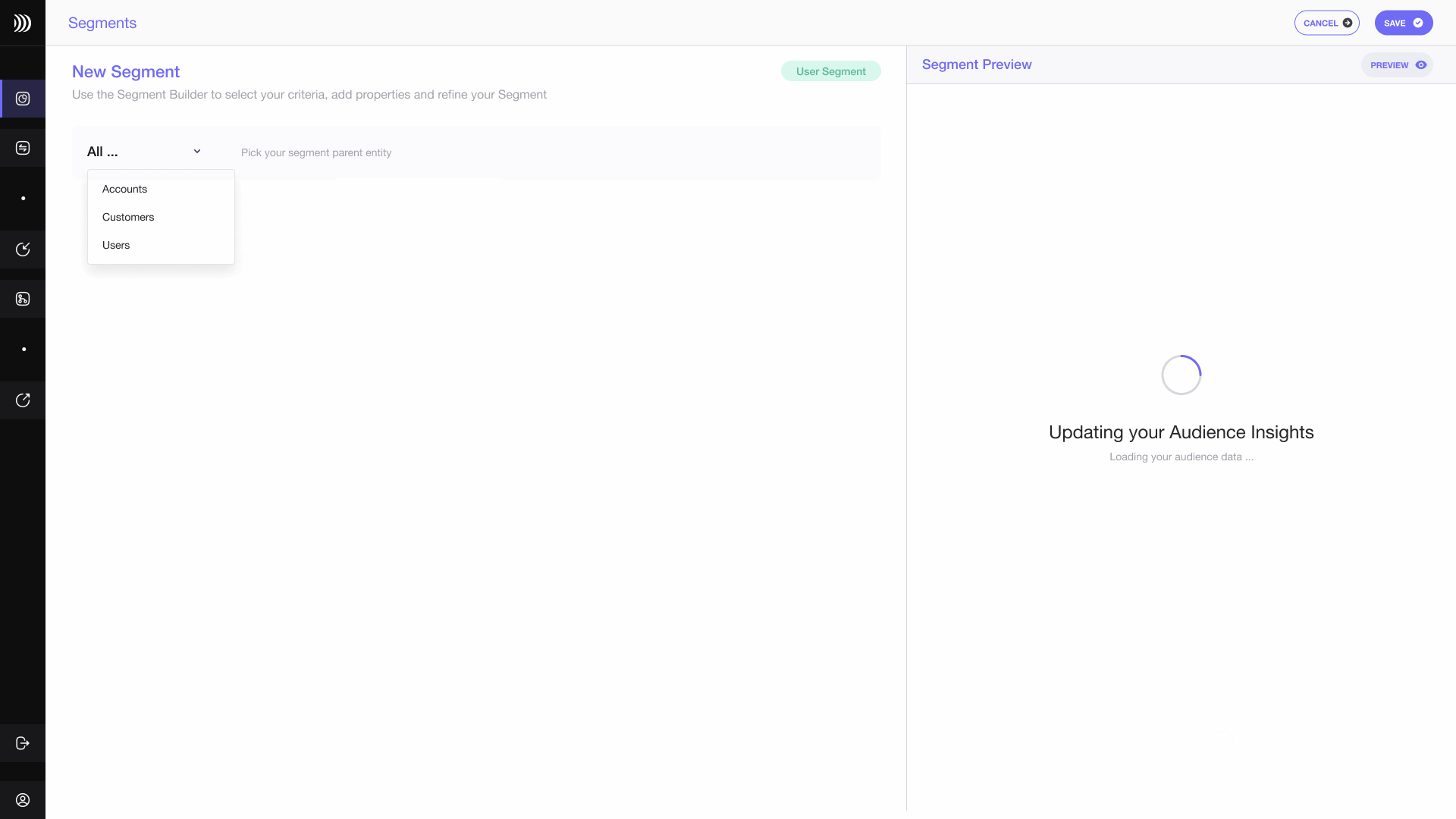
Our SQL-free segment builder
Step 6: Activate your data
You've got your marketing tools integrated, your customer data collected and unified, and your Composable CDP set up - it's time to put it all into action! Use the DinMo platform to activate your data in marketing, and watch as customer insights help you create targeted campaigns that hit the mark. With a data activation platform, you can automate marketing workflows and run highly efficient campaigns across multiple channels. Say goodbye to tedious manual work and hello to streamlined marketing success!
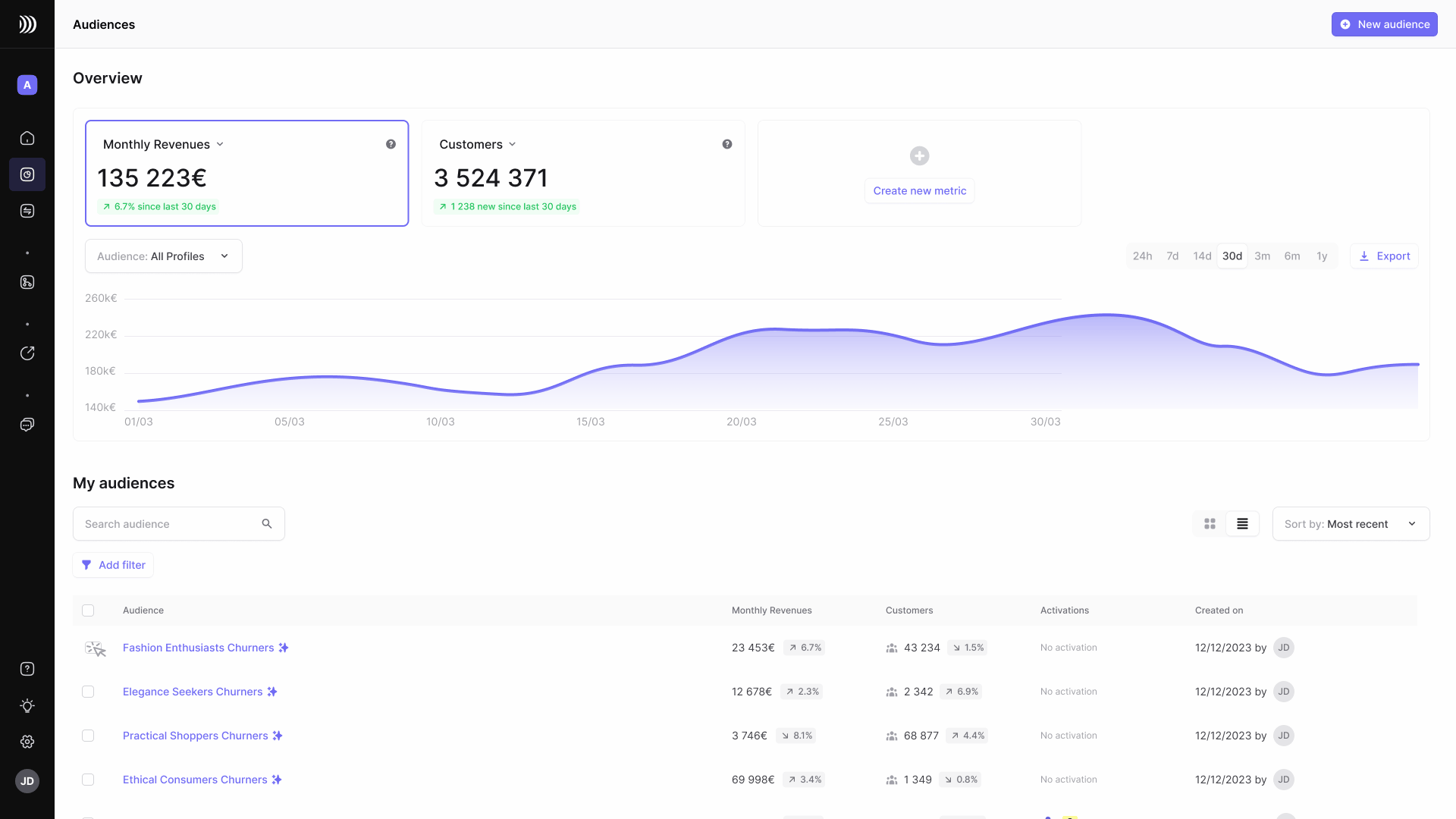
One-click activation
Step 7: Monitor and optimize your campaigns
Real-time analytics are your best friend when it comes to monitoring campaign performance and optimizing for success. Thanks to your data activation tool, you can constantly track and analyze performance, make data-driven decisions, and improve ROI. The possibilities are endless, and with the power of real-time analytics on your side, you'll be able to take your marketing campaigns to new heights.
Wrapping up
To sum up, activating data in marketing using a data warehouse and a Composable CDP involves integrating your marketing tools, collecting and unifying customer data in a data warehouse, and using the insights to create targeted marketing campaigns using the activation tool. By following these steps, you'll build a rock-solid data-driven marketing strategy that will propel your business to success!
If you want to learn more about data activation and what DinMo does, contact us!














